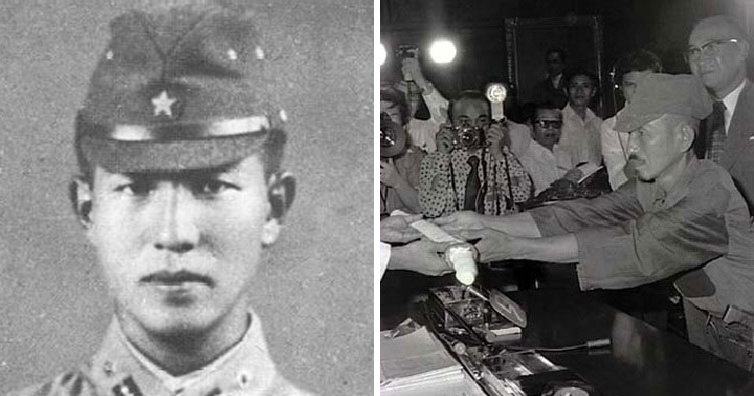Here at I’m A Useless Info Junkie we’ve covered a lot of World War II related stories so far. To name a few, we’ve talked about How Agents Could Tell If A Safe House Was Convenient To Visit During WWII, Why The Axis Powers Were Called The ‘Axis Powers’?, What Was The ‘First’ And ‘Second’ Reich?, Churchill’s Plan To Start WWIII Right After WWII and many many more.
But the topic we chose today is hands down, the more weird one: because Hiroo Onoda, a Japanese soldier who was sent to Philippines, unaware that the war was over, continued fighting WWII a full 29 years after his country surrendered.
Here’s his interesting story. (the article continues after the ad)
Hiroo Onoda was a 20-year old Japanese soldier who was trained as an Imperial Army Intelligence Officer at the at Nakano School. During his training, he was taught how to conduct guerrilla warfare and more specifically, how to gather intelligence.
In 1944, Onoda was sent in the Philippine island of Lubang in order to go in behind enemy lines with some simple orders:
You are absolutely forbidden to die by your own hand. It may take three years, it may take five, but whatever happens, we’ll come back for you. Until then, so long as you have one soldier, you are to continue to lead him. You may have to live on coconuts. If that’s the case, live on coconuts! Under no circumstances are you to give up your life voluntarily.
When he went there, he linked up with a small group of 3 people. While most of the other small groups that were already on the island were quickly killed off, Onoda’s group, were not. A year went by, the war ended but the Japanese continued their raids on the island. In October 1945, they came across a leaflet stating “The war ended August 15th. Come down from the mountains!” They discussed it, and all agreed that it was Allied propaganda trying to trick them into surrendering. So, they continued hiding and fighting when they could risk it.
Near the end of the same year, locals got a Boeing B-17 and dropped leaflets on the jungle ordering them to surrender – an order signed by General Yamashita. Again, the group discussed the content of the leaflets and came to the conclusion that it was propaganda. They just couldn’t believe that Japan lost the war so quickly.
As years went by, more and more leaflets, reports from newspapers and photographs were dropped in the jungle but Onoda and his men always found something suspicious. They continued carrying on guerrilla warfare tactics in order to refill their strictly rationing supplies and did so for 27 more years.
Eventually, all of his team members died and Onoda continued hiding in the jungle alone. They considered him dead and none was looking for him anyone. But, in 1974, a college student Nario Suzuki, decided to travel to Philippines and look for Onoda. Surprisingly, he succeeded! He found Onoda and tried to convince him to return home. Of course, Onoda refused so, Suzuki traveled back to Japan and got the (then retired) Major Taniguchi back to the island. Taniguchi talked with him and explained the situation – Japanese have really lost the war 29 years ago.
Photo: Norio Suzuki
On March 10, 1975, Onoda finally came out of hiding and surrendered his sword to Ferdinand Marcos, the Philippine President. Marcos, pardoned him for his crimes, because “Onoda was under the impression that he was still at war the entire time”. He was 52 at the time:
Photo: Wikimedia
Onoda returned to Japan and lived for 40 more years, dying at age 91 on January 16, 2014.
If you like what you read, then you will definitely love this one: The Device Japanese Women Use So You Don’t Hear Them Pee
Photo: Wikimedia, Wikimedia,
Photoshop: I’m A Useless Info Junkie
Sources: Hiroo Onoda | Hiroo Onoda, Soldier Who Hid in Jungle for Decades, Dies at 91 | The soldier who wouldn’t surrender

